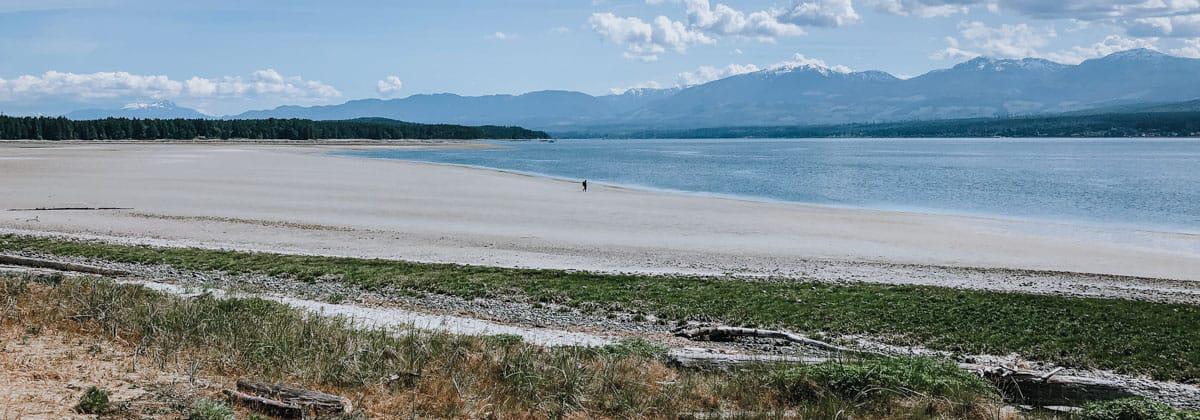
Modernization
Learn more about government’s intention to modernize the museum to protect our historic holdings and provide better access to our collections.

Shoreline habitats are not homogeneous. They encompass a continuum of dynamic microsystems that may not be representative of either fully terrestrial or fully marine systems. Taxonomic inventories in either system tend to concentrate on biota within their boundaries. As a result, shoreline invertebrates are rarely the focus of concerted biodiversity inventory efforts, leaving estimates of future impacts on that biodiversity unknowable. Furthermore, continuing and repeated surveys are crucial, as even the most intensive taxonomic inventories are limited to isolated records of locations and dates.
Current news reports indicate a potential catastrophic decline in global biodiversity. Despite these global concerns, even preliminary lists of invertebrate species in BC shoreline areas do not yet exist. Vancouver Island and the Gulf Islands present a large number of diverse shoreline habitats within a relatively small and easily accessible area. Baseline surveys of terrestrial and shoreline invertebrates will generate vital species lists but will also greatly increase the known range and population data of more than 15 federally and provincially listed (i.e., threatened or endangered) species.
The Islands of Biodiversity project includes both fieldwork and collections components. Identification, databasing and curation of existing shoreline specimens in the Royal BC Museum has taken place throughout the first phases of the project. Large, important collections of shoreline insects and spiders have been identified within the collection. Examples include a large number of Diptera from Haida Gwaii collected in 2000–2001; a large number of Staphylinidae beetles from the Gulf Islands from 1989–1998; and a number of insects from Zayas (1987) and Savary Islands (1918–1919). In addition to these specimens, regular field collecting by museum staff over the years has produced numerous shoreline specimens for analysis. All of these specimens are being identified and entered into the museum’s database for use in this project.
The field work component of this project includes both targeted trips to particular shoreline areas and participation in collaborative scientific events. All fieldwork includes sampling for insects and spiders, observing and recording behaviours in the field, and adding specimens to the museum’s entomology collection. In 2017 and 2018, a number of large-scale collaborative events allowed for fieldwork to be completed with the assistance of local experts across the province. These events included BioBlitzes organized by Parks Canada, the Valdes Island Conservancy and Biodiversity Galiano. Participation in the Canada C3 expedition in 2017 allowed for fieldwork in Haida Gwaii and on the central coast of BC. A large-scale, multi-participant Terrestrial BioBlitz of Calvert Island, hosted and organized by the Hakai Institute, produced a large amount of insect specimens and molecular data. The summer of 2019 included fieldwork conducted in collaboration with BC Parks. Participants visited more than 20 BC parks to survey invertebrates along their coastlines and generated complete reports on the species present in each park. In total, more than 5,000 insect and spider specimens have been collected, prepared, identified and integrated in to the museum entomology collection. Future fieldwork will continue to survey insects and spiders in collaboration with local experts, First Nations and government partners.
Research from the Islands of Biodiversity project has produced a number of public presentations, a Pocket Gallery exhibit, articles for the public and peer-reviewed, scientific, open-access publications. The first paper (Gibson 2017) is a checklist of 26 species of thick-headed flies (Diptera: Conopidae) found throughout British Columbia, including shoreline locales. A collaborative paper on the Diptera of Canada (Savage et al. 2019) included many new records from this project. Public talks on the Islands of Biodiversity project have been delivered in the museum as well as to local schools, the Shaw Centre for the Salish Sea and the Victoria Palaeontology Society. Scientific presentations have been made to the Entomological Societies of British Columbia, Canada and America, as well as the Canadian Society for Ecology and Evolution. A Pocket Gallery exhibit titled Life on the Edge: British Columbia’s Shoreline Insects and Spiders was developed and was displayed from August to October 2017. The exhibit included discussion of specimens collected as part of the project, as well as some of its main questions. Life on the Edge was featured in an episode of CHEK TV’sThis Week in History, as well as in an interview with CBC Radio.
| Article | Authors |
|---|---|
| “An Updated and Annotated Checklist of the Thick-Headed Flies (Diptera: Conopidae) of British Columbia, the Yukon, and Alaska.” Journal of the Entomological Society of British Columbia 114 (2017): 38–55. | Gibson, J.F. |
| “Diptera of Canada.” ZooKeys 819 (2019): 397–450. | Savage, J., A. Borkent, F. Brodo, J.M. Cumming, G. Curler, D.C. Currie, J.R. deWaard, J.F. Gibson, M. Hauser, L. Laplante, O. Lonsdale, S.A. Marshall, J.E. O’Hara, B.J Sinclair, J.H. Skevington |